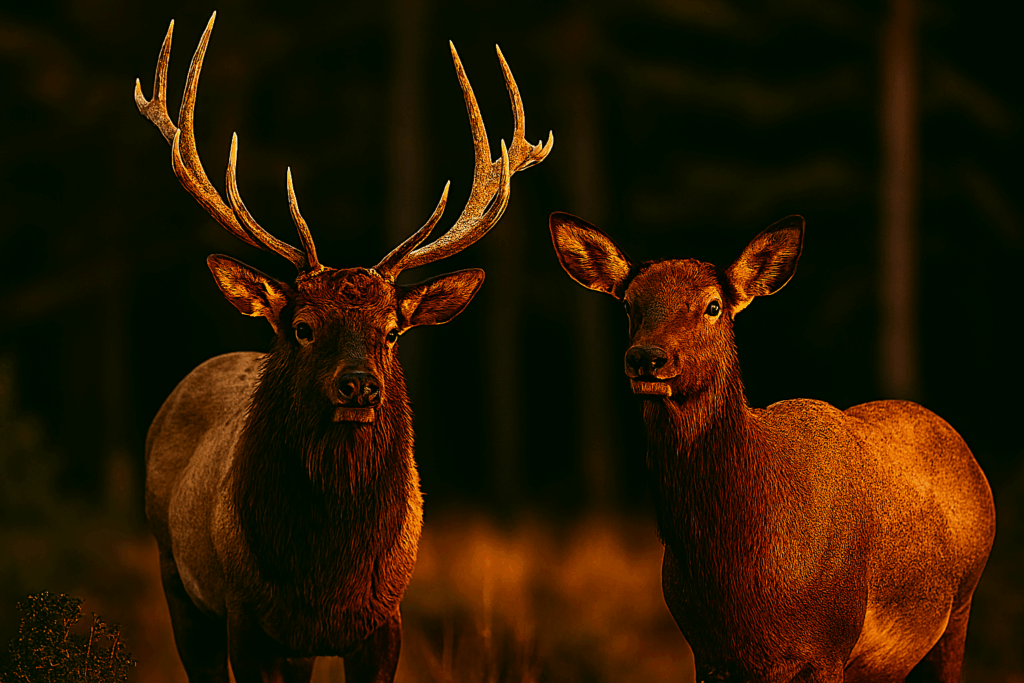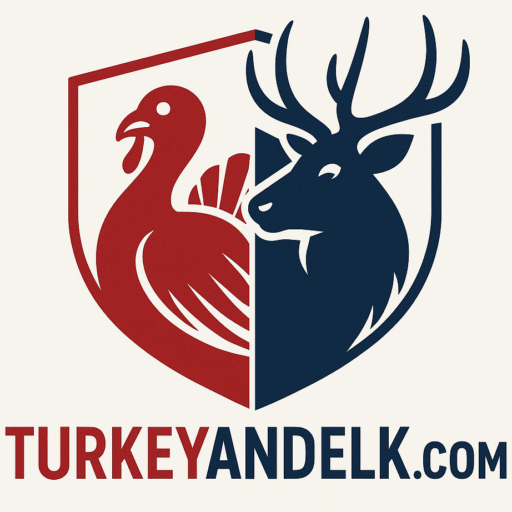Rocky Mountain Elk Hunting Tips
Rocky Mountain Elk Hunting Tips offer the edge that self-reliant hunters need to succeed in the rugged mountains of the West. In this guide, you’ll discover proven strategies, key gear essentials, and the best public land locations for tracking and harvesting elk. Whether you’re a first-timer or a seasoned hunter, these Rocky Mountain Elk Hunting Tips will help you navigate regulations, prepare for tough conditions, and maximize your chances of a rewarding elk hunt.

Biology and Physical Characteristics
The Rocky Mountain elk stands among the most impressive mammals roaming North America. Bulls can tip the scales at up to 700 pounds and grow antlers that stretch wide enough to duck through, while cows average around 500 pounds with a sleek neck and no antlers. Their coats shift from tan in summer to a deeper brown in winter, and a bright buff rump patch flickers like a warning flag when they charge. Thick neck muscles bulk up bulls before rutting season, giving their massive antlers the muscle power for jaw-dropping sparring sessions.
Elk necks aren’t just for pushing and shoving; they need them to haul a huge digestive system. These animals are ruminants with a four-chambered stomach built to break down grasses and shrubs. Digestion runs slow and steady, so elk graze for hours in open meadows before bedding down in cover to chew cud like a metronome. Their bulbous hooves spread weight to keep them from sinking in snow or mud, making them masters of steep slopes and deep powder.
Habitat and Geographic Range
Rocky Mountain elk roam a vast swath from New Mexico’s mountains up through Alberta and British Columbia. Their stronghold lies in high-elevation meadows fed by snowmelt, battling blistering winds and temperatures that freeze your bones. In summer they climb above treeline to feed on tender grasses and wildflowers, then slide down to lower valleys when winter packs the snow too deep.
These elk don’t stick to just one type of timber; they use a patchwork of aspen, pine, and fir stands to bed down out of the wind and hide from predators. Be ready to go where the density changes, because elk will feed along forest edges at dawn and dusk and hole up under tree canopies when the sun sits high. Tracking their migratory routes from summer range to wintering valleys is a self-reliant hunter’s lifeline out here.
Behavior and Hunting Challenges
Elk are wary and cunning. Bulls bellow calls that rumble through timbered slopes, marking territory and wooing cows during the rut. Cows form maternal herds that travel with calves in tow, especially vigilant against wolves and mountain lions. These herds scatter fast if alarmed, vanishing into the timber or mist like ghosts.
Hunting them demands nerves of steel. The slightest human scent, weird movement, or unnatural sound sends elk slipping off like shadows. Rut season amps their aggression, but bulls still circle downwind of any odd scent. Deep woods block calls and limit visibility, so you’ll be peeling off layers at 4 a.m., glassing rocky ridges, and whisper-stalking through deadfall. Stay quiet, stay downwind, and stay patient—anything less means watching them disappear forever.
Hunting Strategies and Techniques
Calling elk is equal parts art and guerilla warfare. A soft cow call can bring a bull crashing through brush, but blow it too loud or too long and you’re just another foreign noise they ignore. Work the wind, find a ridge that gives you a view, and use short, clipped calls—don’t chatter nonstop like an amateur at a county fair.
Still hunting works wonders when elk bed in thick timber. Crawl through deadfall on bare skin and camouflage paint, taste the pine resin in your mouth, and move in 15-minute stretches before glassing again. At dawn and dusk, feed-site ambushes near meadows pay dividends. Sit tight, grunt once, and watch the light change as elk file in. Suck it up when the cold bites through your gear—elk won’t wait for you to get warm.
Public Land Locations and Access
Colorado’s RMNP edges host steady herds, but nothing beats BLM and National Forest lands for solitude. White River National Forest offers miles of remote country, while GMU 61 in Wyoming packs aggressive elk built on rut testosterone and winter range. These areas lack fancy trailheads; you’ll backpack miles on unmarked paths, skin out hikes on steep talus, and navigate snaggy beetle-kill forests.
Backcountry roads open seasonally, so study topographic maps until your eyes bleed. Pack light, carry extra fuel, and stash cache points on maps or GPS. When gates shut, remember that a mile of hoof-beaten trail might save you an hour of fighting brush. Plan water sources carefully—dry creek beds in late season turn your hunt into a survival mission if you screw up.
Season Information and Regulations
Elk tags come in flavors like limited, over-the-counter, and youth-only hunts. Draw for a coveted unit or grab an OTC tag where pressure thins out. Archery seasons hit before rifle, offering quieter hunts but limited range. Muzzleloader season sits between archery and rifle, so be ready for foggy mornings and quick shot windows.
Regulations vary by unit: some restrict tag numbers and weapon types, while others demand meat meat-handling requirements to ensure you bring home edible fractions. Check state wildlife agency websites before you drive in. Legal hunt hours start at half-hour before sunrise until half-hour after sunset—steal every minute because elk sure will.
Trophy Considerations and Record Keeping
Bulls get ranked by antler points, spread, and mass—think of it as elk beauty pageant scoring. Boone & Crockett scoring matters if you chase record book potential, but wide, symmetrical racks win local bragging rights. Record everything: date, grid coordinates, weather, herd size, and behavior. A simple field notebook works better than digital apps that fail out of range.
Photograph antlers next to a scale, snap video of the hunt, and log each detail. Tracking seasons across years will show herd trends and rut peaks. Compare success rates between methods to dial in what works for your time investment. Good record-keeping turns guesswork into data you can analyze for next year’s advantage.
Conservation and Population Status
Rocky Mountain elk recovered from near extirpation in the early 1900s thanks to aggressive reintroduction and habitat management. State agencies now balance population numbers to prevent overgrazing and human-elk conflicts in agricultural valleys. Herd numbers fluctuate with harsh winters and drought conditions reducing forage quality and calf survival.
Hunters fund the system through license fees and excise taxes on gear. Every tag purchased helps manage herd health and secure migration corridors. As a self-reliant hunter, pushing for sustainable take ensures elk thrive for next generations. Stay informed on local conservation initiatives and volunteer for habitat projects when you can.
Tips for First-Time Hunters
Bring the right gear and the right mindset: microspikes, gaiters, and merino base layers trump bulky cotton. Practice shooting sticks and glassing skills on local hills until you can pick out a cow elk silhouette at 400 yards. Scout before season opens and mark bedding areas with GPS waypoints. Learn to gut and pack elk meat solo—nothing drains spirits faster than hauling quarters uphill in the dark.
Embrace discomfort. Long miles, wind, snow, and low temps are part of the deal. Talk to locals at trailheads about recent sign and water sources. Always have a backup plan when elk vanish, because they will. Stay tough, adapt on the fly, and treat every hunt like a school of hard knocks—failures teach more than triumphs.
